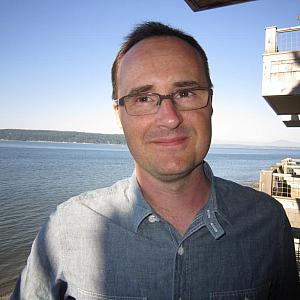
William Heisel
Contributing Editor

Contributing Editor
I have reported on health for most of my career. My work as an investigative reporter at the Los Angeles Times and the Orange County Register exposed problems with the fertility industry, the trade in human body parts and the use of illegal drugs in sports. I helped create a first-of-its-kind report card judging hospitals on a wide array of measures for a story that was a finalist for the Pulitzer Prize. I was one of the lead reporters on a series of stories about lead in candy, a series that also was a finalist for the Pulitzer.For the Center for Health Journalism (previously known as Reporting on Health), I have written about investigative health reporting and occasionally broke news on my column, Antidote. I also was the project editor on the Just One Breath collaborative reporting series. These days, for the University of Washington, I now work as the Executive Director for Insitutue for Health Metrics and Evaluation's Client Services, a social enterprise. You can follow me on Twitter @wheisel.

Prompted by her experience as the mother of a son conceived with the help of a sperm donor, Wendy Kramer created an online, voluntary registry system for children of egg and sperm donors. What's she learned a decade later?

Can I just say it? Ivan Oransky must have found a wrinkle in time. Here's a look at how he manages his editing, blogging and teaching duties.

Blogging keeps health journalist and medical doctor Ivan Oransky busy, but he has taken a new day job. In July, he became the vice president and global editorial director for MedPage Today. Here's the first of a two part Q&A with Oransky.

Center for Health Journalism Digital's "Health and the Built Environment Webinar: What Makes a Healthy Environment?" offered ideas for journalists to cover this important issue, which when left unaddressed by the medical community can add significantly to medical costs and patient morbidity.

If your main sources on the health beat are physicians, you’re not doing your job. That became clear over the course of Health and the Built Environment Webinar: What Makes a Healthy Environment?, presented by Center for Health Journalism Digital this week.

The Solutions Journalism Network and the Institute for Health Metrics and Evaluation have global health "positive deviants" ripe for applying to the Pulitzer Center on Crisis Reporting's grant.

Sometimes the good work you do as a journalist has an impact after you’re no longer around to enjoy the praise. Consider former WUKY reporter Brenna Angel, who pushed for University of Kentucky hospital records about pediatric cardiac surgery mortality rates.

It’s easy to fall into clichés and misinformation when writing about the end of life. Here are my five favorite ideas from last week's Association of Health Care Journalists webinar on the subject.

Certainty is often unattainable in medical care. It’s something my friends who are physicians and scientists live and breathe every day, but patients expect certainty from science.

If the doctor wasn't careful, she explained, she could tear up the inside of my nose with the swab designed used to test for one of the diseases that might be causing my violent coughs. Almost a month later, I still don't know the source of the cough.